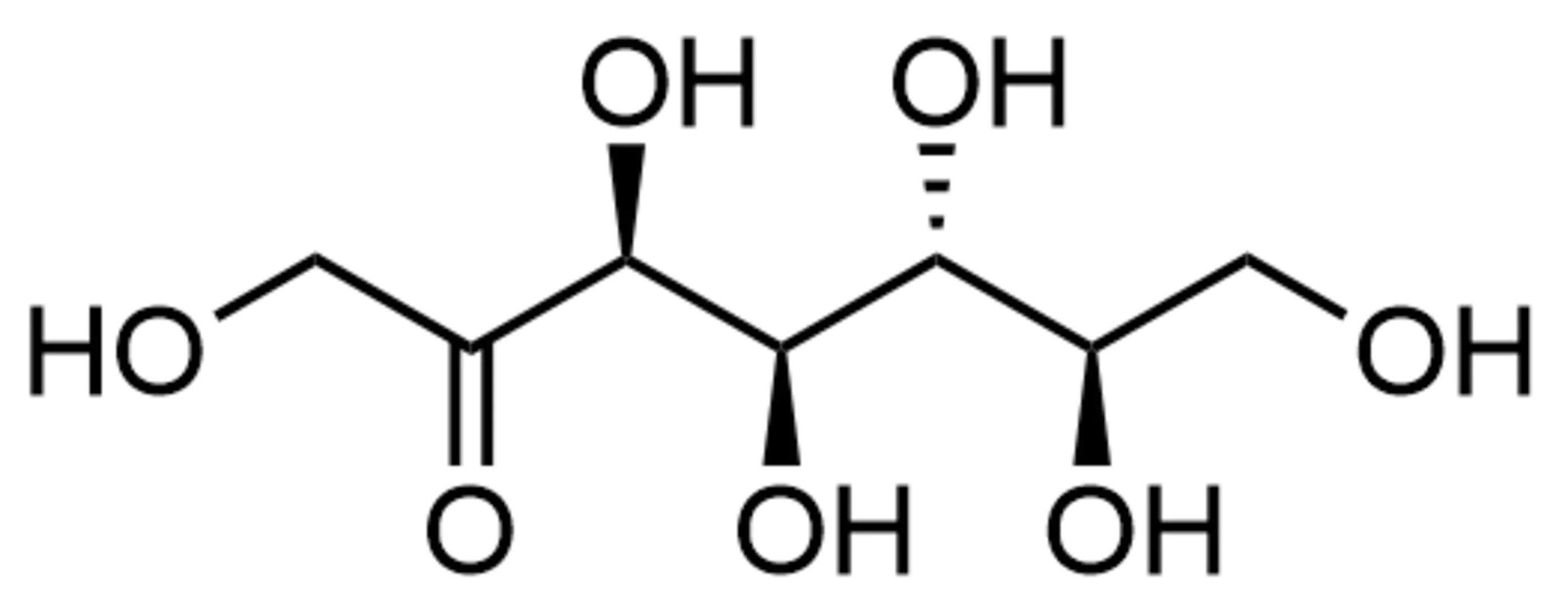D-Sedoheptulose—Efficient Production of Rare Sugar
NAGASE targeted the D-sedoheptulose produced by Streptomyces and developed technology to mass produce it using N-STePP™.
What is D-Sedoheptulose?
D-Sedoheptulose (sedoheptulose) is a rare naturally-occurring sugar. While glucose is a six-carbon monosaccharide and xylose is a five-carbon monosaccharide, sedoheptulose is unique in being a seven-carbon monosaccharide, which is very rare in nature (Figure 1). Sedoheptulose was discovered in Sedum spectabile in 1917,¹ yet due to its rarity almost no research was carried out on its bioactive properties. It is an interesting question whether or not there is a causal relationship between Sedum spectabile’s desiccation tolerance and the ample amount of sedoheptulose it contains.

Figure 1: D-Sedoheptulose
Sedoheptulose 7-phosphate, an organophosphate of sedoheptulose, is an intermediate in the pentose phosphate pathway, part of the central metabolism of organisms, and is also an intermediate in the Calvin-Benson pathway, a carbon fixation pathway in photosynthesis, so it fulfills an important role in the metabolism of organisms. Recently, it was found that a sedoheptulose kinase (CARKL) that catalyzes the phosphorylation of sedoheptulose can control the inflammatory immune response through metabolic control (Figure 2).² These results corroborate the existence of a mutually dependent relationship between metabolism and immunity, and further research may show what role sedoheptulose plays in this relationship.

[Figure 2] Control Mechanism of CARKL Cell Metabolism (2012) 15:813-826 Figure 7
Production of Sedoheptulose by Streptomyces
It has long been known that Streptomyces produces sedoheptulose, but the amount was minimal.³ And while sedoheptulose is anticipated to have uses in treating and preventing inflammation,⁴ or in supplements and health foods,⁵ it has not yet been put to practical use. The Nagase Bio-Innovation Center, while developing technology to produce materials using Streptomyces as a host, discovered that sedoheptulose production could be dramatically increased through metabolic engineering.⁶ By developing this technology, the Nagase Bio-Innovation Center was able to accelerate research into the functions of sedoheptulose and contribute to studies for its practical applications.
References
1. F.B.La Forge and C.S. Hudson. Sedoheptose, a new sugar from Sedum Spectabile. I J. Biol. Chem. (1917) 30:61-77
2. Haschemi A, et al. The Sedoheptulose Kinase CARKL Directs Macrophage Polarization through Control of Glucose Metabolism. Cell Metabolism (2012) 15:813-826
3. Okuda T, et al. Accumulation of sedoheptulose by Streptomyces. J. Biochem. (1963) 54:107-108
4. WO2014147214
5. WO2014147213
6. WO2019208747
We’re Here to Help
Complete the following fields with your information, as well as a short, detailed description of your request and a NAGASE Specialist will be in touch with you shortly.











